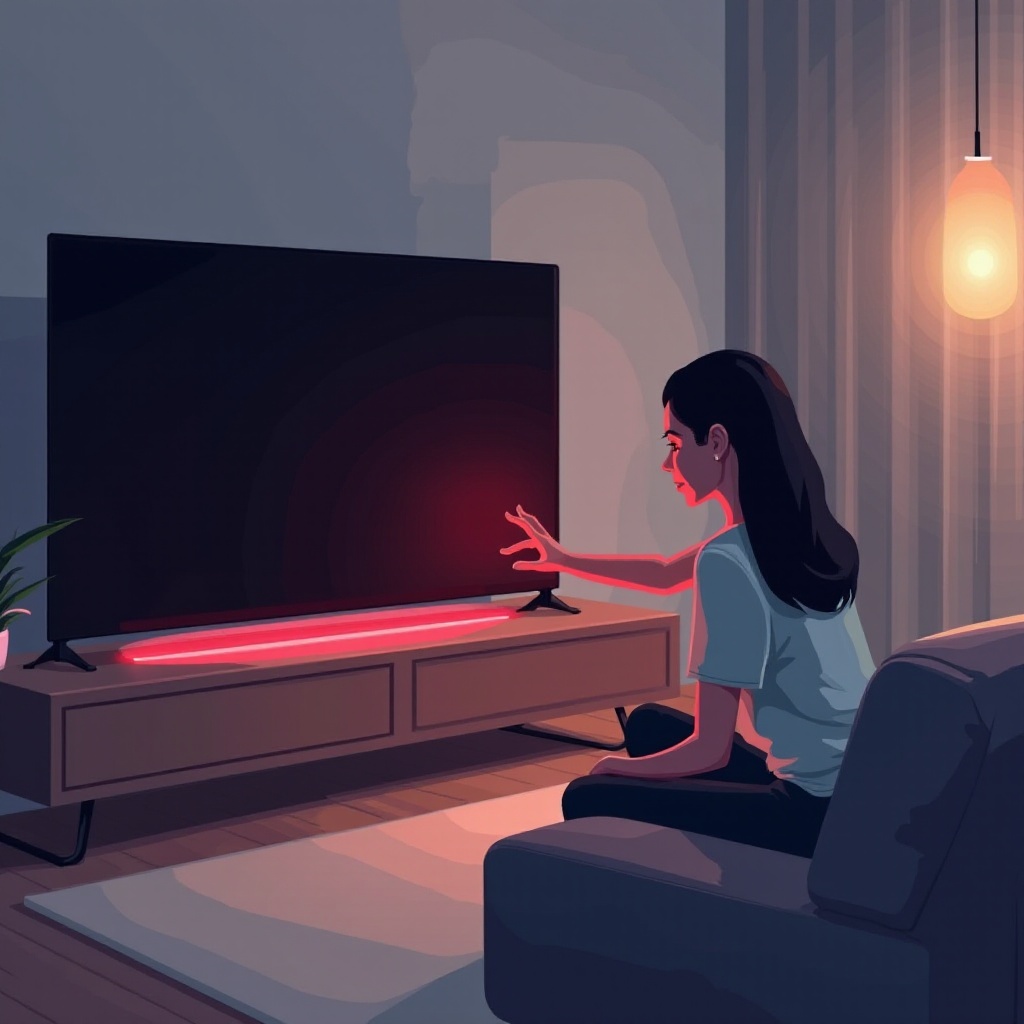Introduction
Encountering an issue where your LG TV won’t turn on while the red light remains illuminated can be a frustrating experience. This is a prevalent problem affecting many LG TV users, attributable to various underlying causes. Thankfully, numerous troubleshooting techniques exist to rectify this problem without the need for professional service calls. Whether it just requires addressing a simple power connection oversight or a more complicated software issue, grasping these solutions will empower you to identify and possibly rectify the issue yourself. In this comprehensive guide, we’ll delve into the root of the persistent red light problem and offer practical steps to revive your screen.
Understanding the Red Light Indicator
The red light on your LG TV operates as a standby indicator. Under normal conditions, this light signals that your TV is receiving power and remains in a standby state, ready to activate via the remote or the physical power button. Conversely, if your television fails to power on with the red light either stable or blinking, it suggests an underlying issue requiring attention. Such complications may arise from power interruptions, remote control malfunctions, or internal hardware failures. Comprehending what a steadfast or blinking red light indicates can guide you toward the most effective troubleshooting path. Let’s examine the initial steps you should undertake to diagnose and resolve these issues.
Initial Troubleshooting Steps
Initially, engaging in fundamental troubleshooting processes is vital to rule out any prevalent causes for your LG TV’s reluctance to power up, despite the active red light.
Check Power Connections
- Confirm that the TV’s power cable is securely attached to both the TV and wall outlet.
- Assess whether the power cable is intact, devoid of apparent wear or damage.
- Make sure any power strips or surge protectors in use are activated and in working condition.
Test the Power Outlet
- Insert another known-operational device into the same outlet to ascertain if it’s delivering power.
- If the outlet is defective, reset the circuit breaker or try an alternative wall outlet.
Inspect the Power Cord
- Scrutinize the power cable for conspicuous cuts, tears, or fraying that might interfere with power delivery.
- Replace the power cable if damaged to guarantee a safe and stable power supply to your TV.
Remote Control Problems
If your TV remains unresponsive, the issue may stem from the remote control impeding power-on signal transmission.
Check Remote Batteries
- Remove and reinsert the remote batteries, ensuring correct installation.
- Replace the batteries with fresh ones if depleted.
Reset the Remote
- Extract the batteries, hold down the power button on your remote for 20 seconds, then reinsert the batteries.
- Attempt to turn on your TV once more using the renewed remote.
Perform a Power Cycle
Undertaking a power cycle often addresses power-related complications by resetting the TV’s internal hardware:
- Disconnect the TV from the power source by unplugging it from the outlet.
- Press and hold the TV’s power button for 30 seconds to discharge any residual power.
- Wait another 5 minutes, then reconnect the TV to the power outlet.
- Try switching on your TV again to check if normal operation resumes.
Assessing for Overheating Issues
Overheating may prompt your TV to initiate protective measures, preventing it from turning on. Here’s how to inspect:
- Examine the environment and verify sufficient ventilation around the TV.
- Clear any objects blocking the TV’s vents to promote airflow.
- Allow the TV to cool down for 30 minutes before trying to power it on again.
Software and Firmware Updates
Outdated software can lead to operational issues; therefore, ensure your TV’s software and firmware are updated.
- Connect your TV to the internet through Wi-Fi or Ethernet.
- Navigate to the TV’s settings menu, accessing the software update section.
- Follow on-screen directions to check for and install available updates.
By foregoing standard troubleshooting procedures, you can often determine whether software updates are pertinent. Assess for these updates even if the TV initially appears operational.
When to Contact LG Support
If your LG TV persists in its refusal to turn on after following these guidelines, contacting LG Support for professional assistance may be advisable. Hardware failures, such as circuit issues or faulty internal components, could be at play. LG’s support team can diagnose more intricate issues and provide advice on possible repair or replacement options.

Conclusion
Experiencing an LG TV that fails to power on despite the red light being illuminated can be perplexing. However, by meticulously adhering to the troubleshooting guide, numerous common problems can be resolved independently. For persistent issues, don’t hesitate to contact LG Support for expert advice and solutions.
Frequently Asked Questions
Why is my LG TV’s red light blinking continuously?
A continuously blinking red light often signifies an internal error, potentially indicating issues requiring professional repair.
Can a power surge cause my LG TV not to turn on?
Yes, a power surge can disrupt the power supply to your TV, potentially causing permanent damage or disrupting functionality.
How often should I update my TV’s firmware?
Regular updates are recommended whenever available, at least once every few months, to maintain performance and address any software bugs.
